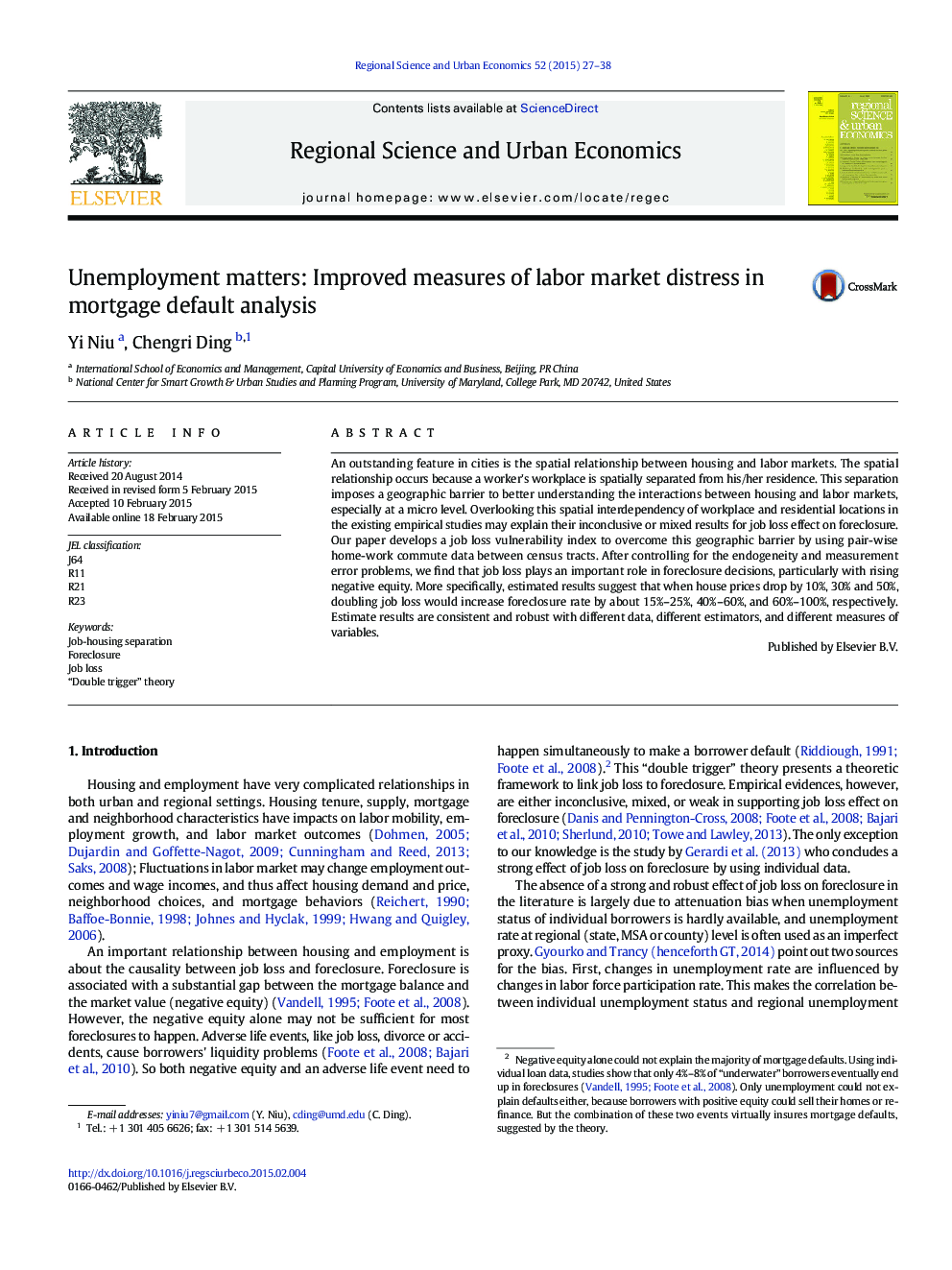| Article ID | Journal | Published Year | Pages | File Type |
|---|---|---|---|---|
| 983872 | Regional Science and Urban Economics | 2015 | 12 Pages |
•We demonstrate the importance of the spatial dependency of workplace and residence.•A job loss index is developed using commute data to address the issue of job-housing separation.•Employment data are used to measure job losses.•We find a strong job loss effect in foreclosures, particularly with the presence of housing price depreciation.
An outstanding feature in cities is the spatial relationship between housing and labor markets. The spatial relationship occurs because a worker's workplace is spatially separated from his/her residence. This separation imposes a geographic barrier to better understanding the interactions between housing and labor markets, especially at a micro level. Overlooking this spatial interdependency of workplace and residential locations in the existing empirical studies may explain their inconclusive or mixed results for job loss effect on foreclosure. Our paper develops a job loss vulnerability index to overcome this geographic barrier by using pair-wise home-work commute data between census tracts. After controlling for the endogeneity and measurement error problems, we find that job loss plays an important role in foreclosure decisions, particularly with rising negative equity. More specifically, estimated results suggest that when house prices drop by 10%, 30% and 50%, doubling job loss would increase foreclosure rate by about 15%–25%, 40%–60%, and 60%–100%, respectively. Estimate results are consistent and robust with different data, different estimators, and different measures of variables.
